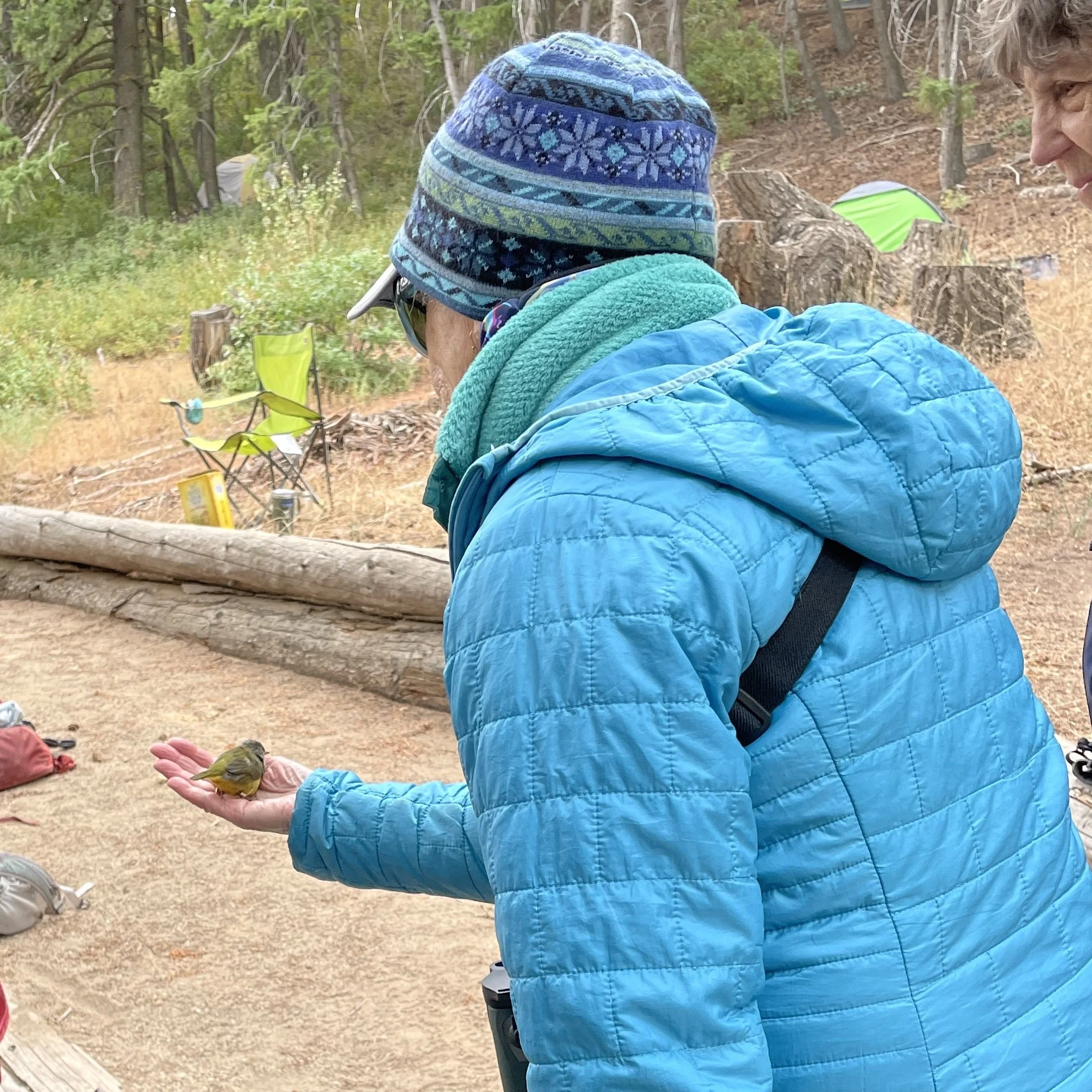Birds Need Bird Science
Budget Cuts Threaten Critical Bird Research Programs
USGS Bird Banding Lab Is Essential For Local Research
Thirty years of bird research by the Boise State University Intermountain Bird Observatory (IBO) is in jeopardy, and future research may be curtailed if Congress cuts funding for the Bird Banding Lab. A gap of funding for even one year can cause a loss of long-term data integrity making it impossible to compare present and future birds numbers with those of the past according to Intermountain Bird Observatory Research Director Jay Carlisle. IBO currently conducts bird research, including banding birds, at the Diane Moore Nature Center on the Boise River, at the Lucky Peak Research Center, at Camas National Wildlife Refuge, and at hummingbird research stations at Bogus Basin Ski Area and in Idaho City. Hundreds of scientists have trained at these sites and thousands of curious people, including many children, have enjoyed the thrill of observing the birds up close.
IBO bird scientist Lucian Davis at the Lucky Peak Research Center
The Bird Banding Lab, a biological research program of the U.S. Geologic Society, has supported critical bird research like that conducted by IBO and The Peregrine Fund, for 105 years. The Lab distributes more than one million uniquely numbered bird bands per year, permits all bird banding activity to ensure compliance with strict standards, and compiles and stores data on each banded bird including weight, sex, and age. This data is used to understand population trends, migration behavior, disease transmission and more.
“Without the Bird Banding Lab, all of the programs and projects dependent on its data would grind to a halt or be severely hampered—something that would be detrimental to bird research across the hemisphere.” National Audubon Society
Anna’s Hummingbird by Ken Miracle
-
Call Senator Crapo: (202) 224-6142
-
Call Senator Risch: (202) 224-2752
-
Call Rpresentative Simpson: (202) 225-5531
-
Call Representative Fulcher: (202) 225-6611
Breeding Bird Survey Data Informs Local Managers
Since 1966, the Breeding Bird Survey, also managed by the USGS, has provided a continuous standardized data set on breeding bird populations in southwest Idaho and throughout North America. More than 400 bird species are tracked. It is the longest-running data source available for breeding birds. More than 50 routes are surveyed in Idaho each year, many have been surveyed continuously for decades. Some Golden Eagle Audubon members are Breeding Bird Survey volunteers. Each spring they and many others drive a 25 mile route and follow a strict protocol to report birds seen or heard at each survey stop.
Sandhill Cranes, Golden Crowned Kinglets and Pine Grosbeaks are three of the species counted in southwest Idaho.
Photos: Linda Wentz, Sean Pursley and Pat McGrane
The Breeding Bird Survey is essential to the Idaho Department of Fish & Game’s (IDFG) ability to monitor populations of many bird species and to respond to initial downward trends with conservation or management action. Early action can stabilize populations before they get perilously low. Early detection is important because strategies for recovery often become more limited and expensive when populations plummet. Losing the Breeding Bird Survey in addition to the current dramatically reduced funding for the Bureau of Land Management, US Forest Service, and US Fish and Wildlife Service in Idaho will severely limit IDFG’s ability to keep their “finger on the pulse” of bird species’ well-being, and weaken what has been a relatively robust system for wildlife management.
The declining populations of American Goshawks and American Kestrels have been documented by these bird science programs. Collected data alerted scientists and conservationists to the need for action. The Peregrine Fund’s American Kestrel Project and IBO’s American Goshawk Project are using the data to identify and support strategies for survival of these raptors.
Photos: Juvenile American Goshawk courtesy of Golden Eagle Audubon. American Kestrel by Ken Miracle
Our ability to save birds depends on science that helps us understand population changes and threats. Golden Eagle Audubon partners, including the Intermountain Bird Observatory, The Peregrine Fund and Idaho Department of Fish and Game, rely on the U.S. Geological Survey’s Bird Banding Lab and Breeding Bird Survey. Funding for these programs is at risk and Congress needs to hear from the people who value bird science and conservation. Your short story about what birds mean to you and your experience with bird science will help influence decision makers. Don’t think someone else will tell your story; it’s up to you. Please contact us at info@goldeneagleaudubon.org if you would like help with your message. We’re happy to lend a hand.










